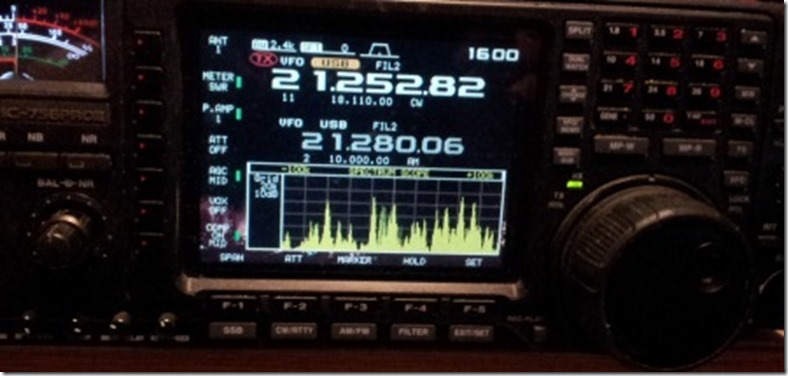
During the 48 hours covered by October 24-25 (2015) one of the premier radiosport events brought the ham radio bands to life. Every fall, around thirty thousand hams worldwide take part in two CQ Worldwide contests. The first is for voice operators, the second in November is for Morse code enthusiasts. The process is quite simple: contact other hams worldwide and exchange a signal report and your location. Scoring is based on the number of successful contacts multiplied by the number of different locations (zones and countries) reached.
This particular ham radiosport contest started in 1948 and was sponsored by the popular CQ amateur radio magazine. Other contests sponsored by the American Radio Relay League date back to 1930. In fact, one could argue that attempts to make across-the-ocean contacts by hams in North America and Europe in the 1920’s were its earliest forms.
Most contest participants take advantage of several technology aids. The first is computerized logging. This means keeping a list of the time, frequency, call sign, and exchange associated with each contact. Many computer-based logging programs also connect to the radio equipment so they can fill in the frequency, mode, time and date fields of a log automatically. At the end of the contest, the entrant can submit the log by just pushing a button.
The second technology aid is a computerized voice or Morse keyer. During the course of a contest, the operator might make hundreds or thousands of contacts. At the same time, he or she makes maybe ten times that number of calls looking for contacts. Making this many contacts and calls in such a compressed time period typically results in fatigue, laryngitis (for voice operators) or wrist cramps (for Morse code operators.) Since calls and exchanges in contests follow a standard format, it is easy to pre-record calls and exchanges. These can be sent by pushing a button. In fact, many Morse code contesters use their computerized logging programs to send all of the Morse code for them.
Radiosport – Many Varieties
Radiosport has many varieties to engage different interests. In fact, some include focus on skills development – such as direction finding – rather than making contacts. See Wikipedia for more information. But, contests are the core of radiosport, and are differentiated in various ways.
- Sponsoring Organization. Contest sponsors include to international, national and regional organizations, as well as popular publications.
- Frequency Bands. While the high frequency (1.8 to 30 MHz) contests draw the biggest crowds, there are specialty contests for VHF, UHF and Microwave enthusiasts.
- Operating Modes. While voice and Morse code are the most popular ham radiosport operating modes, there are specialized contests for more specialized digital modes, such as radio teletype.
- Operating Categories. Most contests have different awards according to a category of operation. These include individual versus club operations, as well as the level of transmitting power used.
Most contests range in duration from 24 – 48 hours and are usually held on weekends.
Some hams do radiosport to get a good score in the contest itself. But most casual operators enter contests to amass contacts for other awards. For example, many hams pursue the ARRL DXCC (DX Century Club) certificates. These are handed out for confirmed contacts in 100, 200 or 300 countries, for example. Participating in a big DX contest is a fast way to contact many countries in a short period of time.